Powerful South African traditional medicine
When the Dutch settlers arrived in the Cape, they were introduced to South African medicinal Plants and recreational plants that were used by the indigenous people.
The potency of South African medicinal plants has long been recognised by international pharmaceutical companies. They are used for many varied applications. These properties are even recognised for the treatment of more serious diseases. African ginger has been found to possibly prevent strokes and there are even plants that have shown positive results in the treatment of cancer.
The medicinal crops are often easy to grow and can be found in many gardens. The plants contain powerful compounds which can relieve the symptoms of diseases but all these should be taken with caution and preferably under medical supervision.
African potato
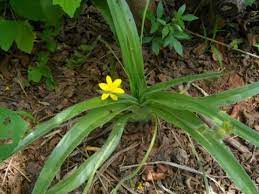
The scientific name for this is Hypoxis hemerocallidea. This hardy and drought-resistant plant is native to South Africa. Traditional healers have used this for muthi to treat delirium, ‘bad blood, diabetes, PMS and as a parasiticide.
Its uses include applying it as a poultice or ointment to treat arthritis, psoriasis and fibromyalgia. The African potato is also used to treat skin conditions such as eczema, acne, scars, burns, rashes, bedsores, warts, stretch marks, sunburn, insect bites and dry skin.
The pulp has a high sterol and sterolin content. Therefore, this may possess potent anti-inflammatory and immune-strengthening properties.
The action of these compounds is similar to cortisone and the use of a product from African Potato may reverse tissue damage. It is a powerful antioxidant and free-radical remover that may have an anti-ageing effect.
Aloe Ferox
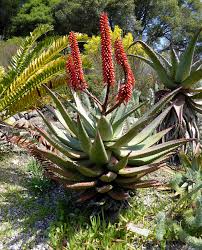
The Aloe is one of the South African medicinal Plants that is known worldwide. There are over 500 species of Aloe. This perennial succulent plant with greyish-green leaves grows up to 3 metres tall. It is also called Bitter aloe, tap aloe, cape aloe, red aloe or inlaba in isiZulu and ikhala isiXhosa.
the gel-like flesh from the insides of the leaves is extremely versatile. This indigenous plant is used for many things.
The commercial possibilities of using aloe in cosmetics have been well exploited in the last while. The healing and nourishing sap from the leaves has been traditionally used for much longer. It has been used for eczema, and other skin irritations and bruises. It helps relieve stomach problems. And helps deal with stress and hypertension. It has anti-inflammatory properties and is even used as a laxative
Bush Tea
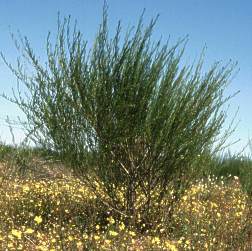
The Afrikaans name for this useful product is Boesmanstee and in Zulu it is called Icholocholo, itshelo, or umthsanelo. This plant with soft green leaves and purple flowers is a popular garden plant.
In traditional medicine is mostly wild-harvested. The leaves are brewed or chewed for the relief of sore throats by the Sotho and Xhosa people. The Venda use extracts of the roots and leaves against parasites. It is used for cleansing and purifying the blood and for treating headaches.
In some areas, it is believed to have aphrodisiac qualities.
There have not been any extensive laboratory tests, but bush tea has been used traditionally for antibacterial, antifungal and antimicrobial action.
The tea has been used to treat heart problems, diabetes, and diarrhoea and has been used to treat venereal diseases.
. The tea could have some commercial value as an antioxidant-rich caffeine-free herbal tea with a flavour reminiscent of caramel and vanilla.
Camphor bush
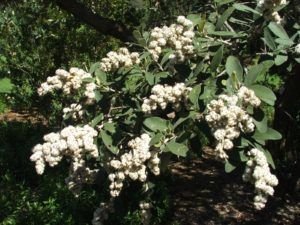
Camphor bush has the scientific name Tarchonanthus camphoratus, African wild sage or ‘vaalbos’ in Afrikaans. It is also known as leleshwa It is a tree that grows up to 9 metres tall,.The name refers to the strong smell of the crushed grey leaves. The oils from the leaves is used to treat fevers, wounds and cuts. Camphor is a natural preservative. The fluffy heads of the flowers are used to stuff pillows, and it is believed that its insect-repelling properties aid a good night’s sleep
Inhaling the smoke of burning Camphor bush leaves clears blocked sinuses and relieves headaches. Decoctions of the leaves are used to treat coughs, toothache, bronchitis and even abdominal pains. An ointment containing camphor can be used to massage aching muscles, and Camphor Bush oil is also used for its anti-irritant properties on sensitive skin.
. Animals can be seen rubbing against the bushes. It is assumed that this is done to keep insects away. The wood of the camphor tree is heavy and it is resistant to termites. It is ideal for storage kists.
Parsley Tree
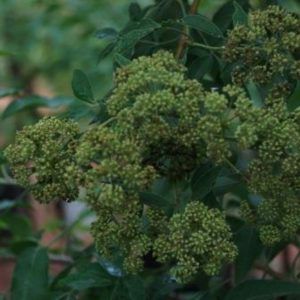
The scientific name of this tree is Heteromorpha arborescens. In Afrikaans Wildepietersielie and zulu Umbangandlala . 4 varieties are widely distributed in Southern Africa. This shrubby tree has important medicinal properties and has varied uses in traditional remedies. The roots, leaves and the bark are used to treat,
- abdominal pain,
- colic,
- cough,
- tuberculosis,
- dysentery,
- fever,
- headaches,
- asthma,
- infertility,
- mental problems,
- nervous disorders,
- shortness of breath, and
- intestinal worms
The main uses, however are for respiratory issues such as colds and flu.
The use of the Parsley tree against intestinal worms has been validated in clinical trials and trials using it for rheumatism and other chronic inflammatory conditions show promising results. Researchers have found that compounds found in the leaves have effects on the serotonergic and dopaminergic systems. These can be used to calm the nervous system.
Adaptogen, which is also found in the plant, helps the body by protecting against stress induced immune suppression and heart damage. The adaptogens also enhance brain function
Other compounds in the Parsley tree have anti-inflammatory and anti-mycobacterial properties.
This plant has many uses and shows great potential for commercial use. However, there I evidence that the plant could be toxic in medium to long-term use.
Moringa Cape Snowbush Wild rosemary
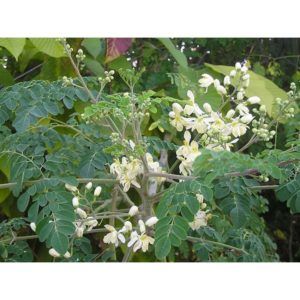
The scientific name of this evergreen shrub, which grows to about 1.5 metres high, is Eriocephalus Africanus. It is also called kapokbos in Afrikaans or wild rosemary. It has silvery leaves which reflect sunlight. Rubbing the leaves, the plant gives off a fresh camphor-like smell. The roots, bark and immature pods are used for medicine. This is a South African medicinal Plant that is used in commercial supplements
The traditional uses of this plant by the Khoi people. It is used as a relaxant and mood enhancer. Moringa is believed to encourage hair growth. It can be used as a diuretic to clear toxins from the body. The extracts from the plant are used to treat coughs and colds and to soothe headaches. It is used to treat wounds or insect bites, bacterial or fungal skin complaints, and gastric ulcers. Moringa is used to treat liver and spleen problems and pains of the joints. The nutrients found in the plant assist in staving off malnutrition.
Wild rosemary oil relieves muscle spasms and is also effective in stopping bleeding. It has antiseptic and antiviral properties. Tea from the plant is used to help against addictions and in order to let go of negative emotions. It has an invigorating effect and acts as an antidepressant. It helps to relieve stress anxiety and anger.
The leaves are smoked to relieve asthma and other respiratory issues.
Pineapple flower
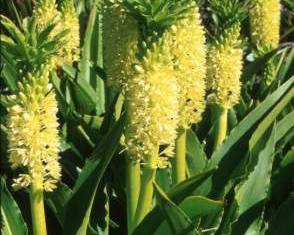
This lily is a popular garden plant. It looks a bit like a green pineapple. The scientific name is Eucomis autumnalis. It is also called krulkoppie in Afrikaans, ubuhlungu becanti or isithithibala esimathunzi in Xhosa and umathunga, ukhokho or umakhandakantsele in Zulu. Eucomis in Greek eukomos means ‘beautiful hair. Autumnalis because the fruit appears in autumn.
The bulb is toxic, but it is popular with traditional healers who use it in water or milk as an enema for lower back pain, stomach aches, colic and flatulence.
It is said to relieve hangovers, treat syphilis, break fevers and induce birth. Flavonoids present in the pineapple lily have antispasmodic and anti-inflammatory actions and it is antifungal. Studies done at the University of Natal have validated its use for treating fever and pain associated with inflammation. It is used as a remedy postoperatively and Is also used in the treatment of bone fractures.
Sour plum (Ximenia caffra)
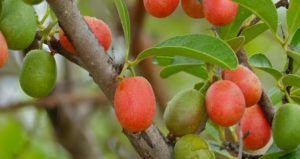
The Sour plum is used to treat infertility and the powdered root is considered to be aphrodisiac. It is consumed to treat fever. The plant is eaten raw.
Koigoed (Helichrysum odoratissimum)
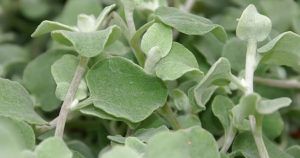
The other common names for koigoed are Everlasting in English and imphepho in isiXhosa. It is a strong aromatic perennial herb or small shrub. The plant grows to about 25 cm tall. Koigoed has aromatic hairy, silvery oval-shaped leaves which are picked as soon as the plant is big enough. Twigs and leaves are used for colds, coughs, infections, headaches, fevers, menstrual pains and other problems
Rose geranium (Pelargonium graveolens)
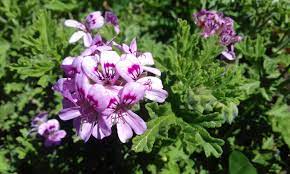
Cape rose geranium is indigenous to South Africa. Sotho people use the paste to treat abscesses and wounds. It is also used to treat PMS and menopausal issues.
Essential oil made from Rose Geranium is used to balance mind and body and as an anti-depressant. It is also anti-bacterial and anti-inflammatory. The oil can be massaged into the skin to reduce excess sebum and it helps to repair burns and broken capillaries.
Rose geranium is used in the food industry as a flavouring, particularly pink foodstuffs.
The oil contains geraniol and citronellol and therefore is a good insect repellent.
Pelargonium sidoides
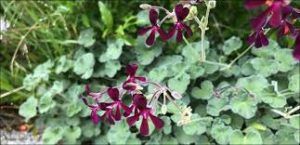
The common name for this Klawerbossie or rabassamin, rooi rabas in Afrikaans and umckaloabo in isiZulu. The velvety long-stalked leaves are slightly aromatic. It has dark reddish-purple flowers.
Pelargonium sidoides is traditionally used for the treatment of coughs, sore throats and chest troubles. It is effective for bronchitis, particularly for children.
Fatigue and weakness can be treated using parts of the plant. Infusions of the tuber are used to treat dysentery and diarrhoea.
African Ginger(Siphonochilus aethiopicus).
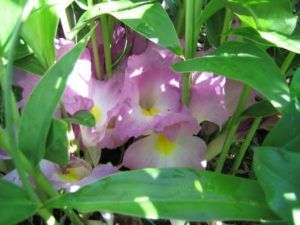
This popular herbal medicine is used by Zulus to protect against snakes and lightning.
Only the roots of the plant are used. They are high in minerals and contain vitamins B3 and B5
The Cornell University Medical College has found that “gingerol” which is found in the plant inhibits an enzyme that causes cells to clot. This may prevent strokes.
The oil is anti-inflammatory, anti-bacterial, and anti-fungal. Ginger oil is used to treat fractures and as a hot compress, it is used for rheumatism and arthritis. Ginger successfully treats digestive problems, nausea and even hangovers. It helps in the treatment of colds and flu. Ginger is known to relieve a sore throat, congestion, coughs and sinusitis. Skin conditions such as sores on the skin and bruises can be treated with ginger oil. The Swati people employ this to treat malaria
Conventionally, it has been used to aid digestion, and relieve sinusitis and asthma. It also reduces fevers by inducing sweating.
Wild garlic (Tulbagia)
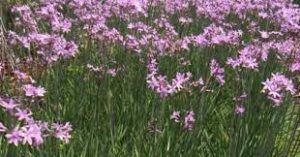
This indigenous plant is called wildeknoflok or perswilde knoffel in Afrikaans and isweli-lezinyoka or isihaqa in isiZulu.
The remedies made from the narrow strap leaves and fat, tuberous roots of Tulbagia are used to treat fever, rheumatism, asthma and constipation.
When the fresh bulbs are boiled in water and the decoction is drunk to treat coughs and colds. This is also used to treat pulmonary tuberculosis, fever, rheumatism, asthma and constipation. It is also used to destroy intestinal worms. The leaves are used to treat cancer of the oesophagus.
Baobab Tree ( Adansonia digitara)
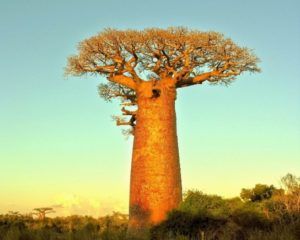
This odd-looking tree familiar in Africa is known to be long-lived, and trees of over 1000 years old have been found.
The flowers are pollinated by bats and a long oval fruit with oil-rich seeds is produced. Trees have been known to take up to 23 years before they produce any fruit.
Emergency water can be extracted from the branches and trunk and the fruit is a natural source of calcium, magnesium, potassium and B-complex vitamins. A drink high in vitamin C is also made.
While this tree provides food, water and fibre, it also has medicinal uses. The young leaves are used to treat fever.
The lightly scented oil from the seeds is edible but is mostly used in the cosmetic industry, the oil is known to be a powerful antioxidant that can reduce damage to the DNA in cells. The cold-pressed oil, also contains vitamins A E K, and D3. This oil is used to heal inflamed gums and chapped lips. It is used as a moisturiser for skin and hair. The oil is a soothing treatment for psoriasis and eczema
In addition to all these benefits, the stringy fibres in the bark are used to make ropes, paper and are also woven to make fabrics.
If you are visiting Greyton and you’d like to learn more about how to use indigenous South African medicinal Plants as an alternative to your current medicine cabinet, then give Marshall Rinquest a call and he’ll gladly take you on a two-hour walk into the Nature Reserve that will make you see Wild Rosemary, Wormwood, Spekboom and Wild Dagga in a different light. If you’re lucky he may even unearth an African Potato (good for your immune system) for you to take home!
See also Franschhoek Indigenous Medicinal and Herb Garden.
Contact: Marshall 0734861965
South African medicinal Plants To be continued…….. See also Healing traditions of the indigenous people of South Africa

